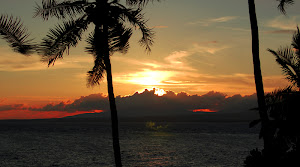 Since I first arrived in the Philippines I have owned 4 motorcycles. All of these have been the inexpensive Chinese "clones" of popular Honda models. My experience has been good with these bikes, but there are some words of caution and some caveats when buying one of these bikes. I also know a bit about the name brand bikes here and can pass along some helpful info if you decide to go that route and spend a bit more money.
Since I first arrived in the Philippines I have owned 4 motorcycles. All of these have been the inexpensive Chinese "clones" of popular Honda models. My experience has been good with these bikes, but there are some words of caution and some caveats when buying one of these bikes. I also know a bit about the name brand bikes here and can pass along some helpful info if you decide to go that route and spend a bit more money.
This is a picture of my second bike. Also a Rusi, but a 150cc Ramjet model. Often used as a mule for conversion to a tricycle or Habel-Habel, it is a Honda TMX 150 clone. The engine is identical to the Honda in most aspects, and even interchanges with many Honda parts. It is your basic 1970's vintage push-rod motor. Torquey and durable. The rest of the bike uses cheaper quality Chinese parts, some of which need to be swapped out if you plan to keep the motorcycle very long. Bearings and tires, as an example. These bikes are geared very low. For highway cruising swap out the rear sprocket for a larger one (42-46 tooth). I kept this bike for about 2 years. It was relatively hassle free, but the electrical system was not so robust, I had frequent minor problems with bulbs and wiring. You can buy similar models for between 36,000 and 46,000 P
My third bike was nearly identical to the second one but was a Motoposh re-branded China clone. Same engine as the Rusi, but different parts used in the assembly. I only kept it a few months as I really wanted a Motoposh SBX 200. There was initially no stock anywhere in the Philippines on this model, but when a few suddenly became available, I traded my 150cc for the 200cc SBX.
This bike is as you might notice modeled after the Honda CBR 400. But at 69,000 pesos, just a little less money. Is it any good? Box stock, no, but with a little modification it is now a pretty good bike. I swapped out the factory rear mono shock for a gas filled one, changed all the bearings including the steering head, added a used 30mm Honda carburetor, and had a custom exhaust built and installed. It is really a relatively fast and responsive bike now, and I have taken it all over Negros and Cebu Island. Total cost about 80,000 P.
Should you buy a china bike instead of a name brand? I can't answer that for you except to say, examine the reasons for buying a motorcycle, and the use you will get from your bike. If you plan to keep it longer than a couple years buy a branded bike for a more trouble free experience. If you like to tinker, or only want a bike for light use, buy a China clone. By the way, the Honda's and other branded bikes sold here are not made in Japan, They also are made in China and assembled in the Philippines using cheaper components to keep the price down. Some are now being imported from India as in the case of Kawasaki (Bajaj).
Update: I have traded my last China bike for a Bajaj Rouser 220. For 98,000 pesos, which was the best cash price I could find in Cebu, I got a whole lot of motorcycle. After 6000 Km I can safely say their is no comparison to my previous china bikes. This particular bike offers, in my opinion, the best bang for the buck in a non Chinese bike. Manufactured in India and assembled in the Philippines, it offers Japanese level quality at a moderate price. Very fast for a 200cc class bike, it is geared a tad high for my tastes, but will out run any scooter style bike in stock configuration. You can pay 250,000 for a Kawaski Ninja 250, but you will not get 150,000 pesos more performance. In fact most reviews concur that the Rouser is almost equal in acceleration to the Ninja up to about 60 KPH. With a higher revving engine and a 6 speed transmission, the Ninja will out run the Rouser at top end speeds. The Rouser handles like a light weight bike and is easy to navigate in city traffic, which is a plus if you want to commute.







